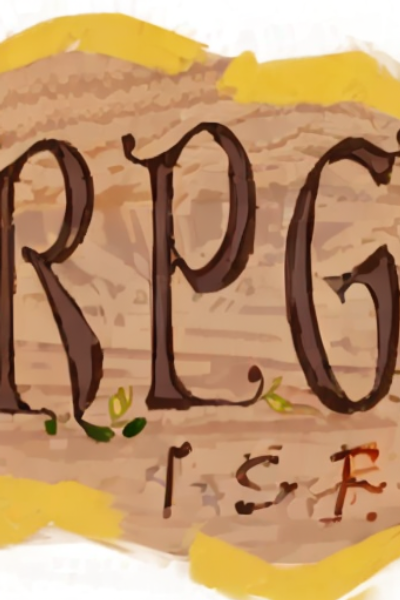
TheBloke's LLM work is generously supported by a grant from andreessen horowitz (a16z)
Loyal Macaroni Maid 7B - AWQ
- Model creator: Sanji Watsuki
- Original model: Loyal Macaroni Maid 7B
Description
This repo contains AWQ model files for Sanji Watsuki's Loyal Macaroni Maid 7B.
These files were quantised using hardware kindly provided by Massed Compute.
About AWQ
AWQ is an efficient, accurate and blazing-fast low-bit weight quantization method, currently supporting 4-bit quantization. Compared to GPTQ, it offers faster Transformers-based inference with equivalent or better quality compared to the most commonly used GPTQ settings.
AWQ models are currently supported on Linux and Windows, with NVidia GPUs only. macOS users: please use GGUF models instead.
It is supported by:
- Text Generation Webui - using Loader: AutoAWQ
- vLLM - version 0.2.2 or later for support for all model types.
- Hugging Face Text Generation Inference (TGI)
- Transformers version 4.35.0 and later, from any code or client that supports Transformers
- AutoAWQ - for use from Python code
Repositories available
- AWQ model(s) for GPU inference.
- GPTQ models for GPU inference, with multiple quantisation parameter options.
- 2, 3, 4, 5, 6 and 8-bit GGUF models for CPU+GPU inference
- Sanji Watsuki's original unquantised fp16 model in pytorch format, for GPU inference and for further conversions
Prompt template: Alpaca
Below is an instruction that describes a task. Write a response that appropriately completes the request.
### Instruction:
{prompt}
### Response:
Provided files, and AWQ parameters
I currently release 128g GEMM models only. The addition of group_size 32 models, and GEMV kernel models, is being actively considered.
Models are released as sharded safetensors files.
| Branch | Bits | GS | AWQ Dataset | Seq Len | Size |
|---|---|---|---|---|---|
| main | 4 | 128 | OpenErotica Erotiquant | 4096 | 4.15 GB |
How to easily download and use this model in text-generation-webui
Please make sure you're using the latest version of text-generation-webui.
It is strongly recommended to use the text-generation-webui one-click-installers unless you're sure you know how to make a manual install.
- Click the Model tab.
- Under Download custom model or LoRA, enter
TheBloke/Loyal-Macaroni-Maid-7B-AWQ. - Click Download.
- The model will start downloading. Once it's finished it will say "Done".
- In the top left, click the refresh icon next to Model.
- In the Model dropdown, choose the model you just downloaded:
Loyal-Macaroni-Maid-7B-AWQ - Select Loader: AutoAWQ.
- Click Load, and the model will load and is now ready for use.
- If you want any custom settings, set them and then click Save settings for this model followed by Reload the Model in the top right.
- Once you're ready, click the Text Generation tab and enter a prompt to get started!
Multi-user inference server: vLLM
Documentation on installing and using vLLM can be found here.
- Please ensure you are using vLLM version 0.2 or later.
- When using vLLM as a server, pass the
--quantization awqparameter.
For example:
python3 -m vllm.entrypoints.api_server --model TheBloke/Loyal-Macaroni-Maid-7B-AWQ --quantization awq --dtype auto
- When using vLLM from Python code, again set
quantization=awq.
For example:
from vllm import LLM, SamplingParams
prompts = [
"Tell me about AI",
"Write a story about llamas",
"What is 291 - 150?",
"How much wood would a woodchuck chuck if a woodchuck could chuck wood?",
]
prompt_template=f'''Below is an instruction that describes a task. Write a response that appropriately completes the request.
### Instruction:
{prompt}
### Response:
'''
prompts = [prompt_template.format(prompt=prompt) for prompt in prompts]
sampling_params = SamplingParams(temperature=0.8, top_p=0.95)
llm = LLM(model="TheBloke/Loyal-Macaroni-Maid-7B-AWQ", quantization="awq", dtype="auto")
outputs = llm.generate(prompts, sampling_params)
# Print the outputs.
for output in outputs:
prompt = output.prompt
generated_text = output.outputs[0].text
print(f"Prompt: {prompt!r}, Generated text: {generated_text!r}")
Multi-user inference server: Hugging Face Text Generation Inference (TGI)
Use TGI version 1.1.0 or later. The official Docker container is: ghcr.io/huggingface/text-generation-inference:1.1.0
Example Docker parameters:
--model-id TheBloke/Loyal-Macaroni-Maid-7B-AWQ --port 3000 --quantize awq --max-input-length 3696 --max-total-tokens 4096 --max-batch-prefill-tokens 4096
Example Python code for interfacing with TGI (requires huggingface-hub 0.17.0 or later):
pip3 install huggingface-hub
from huggingface_hub import InferenceClient
endpoint_url = "https://your-endpoint-url-here"
prompt = "Tell me about AI"
prompt_template=f'''Below is an instruction that describes a task. Write a response that appropriately completes the request.
### Instruction:
{prompt}
### Response:
'''
client = InferenceClient(endpoint_url)
response = client.text_generation(prompt,
max_new_tokens=128,
do_sample=True,
temperature=0.7,
top_p=0.95,
top_k=40,
repetition_penalty=1.1)
print(f"Model output: ", response)
Inference from Python code using Transformers
Install the necessary packages
- Requires: Transformers 4.35.0 or later.
- Requires: AutoAWQ 0.1.6 or later.
pip3 install --upgrade "autoawq>=0.1.6" "transformers>=4.35.0"
Note that if you are using PyTorch 2.0.1, the above AutoAWQ command will automatically upgrade you to PyTorch 2.1.0.
If you are using CUDA 11.8 and wish to continue using PyTorch 2.0.1, instead run this command:
pip3 install https://github.com/casper-hansen/AutoAWQ/releases/download/v0.1.6/autoawq-0.1.6+cu118-cp310-cp310-linux_x86_64.whl
If you have problems installing AutoAWQ using the pre-built wheels, install it from source instead:
pip3 uninstall -y autoawq
git clone https://github.com/casper-hansen/AutoAWQ
cd AutoAWQ
pip3 install .
Transformers example code (requires Transformers 4.35.0 and later)
from transformers import AutoModelForCausalLM, AutoTokenizer, TextStreamer
model_name_or_path = "TheBloke/Loyal-Macaroni-Maid-7B-AWQ"
tokenizer = AutoTokenizer.from_pretrained(model_name_or_path)
model = AutoModelForCausalLM.from_pretrained(
model_name_or_path,
low_cpu_mem_usage=True,
device_map="cuda:0"
)
# Using the text streamer to stream output one token at a time
streamer = TextStreamer(tokenizer, skip_prompt=True, skip_special_tokens=True)
prompt = "Tell me about AI"
prompt_template=f'''Below is an instruction that describes a task. Write a response that appropriately completes the request.
### Instruction:
{prompt}
### Response:
'''
# Convert prompt to tokens
tokens = tokenizer(
prompt_template,
return_tensors='pt'
).input_ids.cuda()
generation_params = {
"do_sample": True,
"temperature": 0.7,
"top_p": 0.95,
"top_k": 40,
"max_new_tokens": 512,
"repetition_penalty": 1.1
}
# Generate streamed output, visible one token at a time
generation_output = model.generate(
tokens,
streamer=streamer,
**generation_params
)
# Generation without a streamer, which will include the prompt in the output
generation_output = model.generate(
tokens,
**generation_params
)
# Get the tokens from the output, decode them, print them
token_output = generation_output[0]
text_output = tokenizer.decode(token_output)
print("model.generate output: ", text_output)
# Inference is also possible via Transformers' pipeline
from transformers import pipeline
pipe = pipeline(
"text-generation",
model=model,
tokenizer=tokenizer,
**generation_params
)
pipe_output = pipe(prompt_template)[0]['generated_text']
print("pipeline output: ", pipe_output)
Compatibility
The files provided are tested to work with:
- text-generation-webui using
Loader: AutoAWQ. - vLLM version 0.2.0 and later.
- Hugging Face Text Generation Inference (TGI) version 1.1.0 and later.
- Transformers version 4.35.0 and later.
- AutoAWQ version 0.1.1 and later.
Discord
For further support, and discussions on these models and AI in general, join us at:
Thanks, and how to contribute
Thanks to the chirper.ai team!
Thanks to Clay from gpus.llm-utils.org!
I've had a lot of people ask if they can contribute. I enjoy providing models and helping people, and would love to be able to spend even more time doing it, as well as expanding into new projects like fine tuning/training.
If you're able and willing to contribute it will be most gratefully received and will help me to keep providing more models, and to start work on new AI projects.
Donaters will get priority support on any and all AI/LLM/model questions and requests, access to a private Discord room, plus other benefits.
- Patreon: https://patreon.com/TheBlokeAI
- Ko-Fi: https://ko-fi.com/TheBlokeAI
Special thanks to: Aemon Algiz.
Patreon special mentions: Michael Levine, 阿明, Trailburnt, Nikolai Manek, John Detwiler, Randy H, Will Dee, Sebastain Graf, NimbleBox.ai, Eugene Pentland, Emad Mostaque, Ai Maven, Jim Angel, Jeff Scroggin, Michael Davis, Manuel Alberto Morcote, Stephen Murray, Robert, Justin Joy, Luke @flexchar, Brandon Frisco, Elijah Stavena, S_X, Dan Guido, Undi ., Komninos Chatzipapas, Shadi, theTransient, Lone Striker, Raven Klaugh, jjj, Cap'n Zoog, Michel-Marie MAUDET (LINAGORA), Matthew Berman, David, Fen Risland, Omer Bin Jawed, Luke Pendergrass, Kalila, OG, Erik Bjäreholt, Rooh Singh, Joseph William Delisle, Dan Lewis, TL, John Villwock, AzureBlack, Brad, Pedro Madruga, Caitlyn Gatomon, K, jinyuan sun, Mano Prime, Alex, Jeffrey Morgan, Alicia Loh, Illia Dulskyi, Chadd, transmissions 11, fincy, Rainer Wilmers, ReadyPlayerEmma, knownsqashed, Mandus, biorpg, Deo Leter, Brandon Phillips, SuperWojo, Sean Connelly, Iucharbius, Jack West, Harry Royden McLaughlin, Nicholas, terasurfer, Vitor Caleffi, Duane Dunston, Johann-Peter Hartmann, David Ziegler, Olakabola, Ken Nordquist, Trenton Dambrowitz, Tom X Nguyen, Vadim, Ajan Kanaga, Leonard Tan, Clay Pascal, Alexandros Triantafyllidis, JM33133, Xule, vamX, ya boyyy, subjectnull, Talal Aujan, Alps Aficionado, wassieverse, Ari Malik, James Bentley, Woland, Spencer Kim, Michael Dempsey, Fred von Graf, Elle, zynix, William Richards, Stanislav Ovsiannikov, Edmond Seymore, Jonathan Leane, Martin Kemka, usrbinkat, Enrico Ros
Thank you to all my generous patrons and donaters!
And thank you again to a16z for their generous grant.
Original model card: Sanji Watsuki's Loyal Macaroni Maid 7B
Description
This repository hosts quantized GGUF files for Loyal-Macaroni-Maid-7B, a 7B model aimed at having engaging RP with solid character card adherence and being a smart cookie at the same time.
In my limited testing, it's a great RP model suitable for RP/ERP with sharp reasoning skills for a 7B. I expect it to both benchmark well and be a very suitable model for general use.
Prompt template: Custom format, or Alpaca
Custom format:
I found the best SillyTavern results from using the Noromaid template.
SillyTavern config files: Context, Instruct. Additionally, here is my Text Completion preset
Otherwise, I tried to ensure that most of the underlying merged models were Alpaca-ish.
Alpaca:
Below is an instruction that describes a task. Write a response that appropriately completes the request.
### Instruction:
{prompt}
### Response:
Helpful Tips
For SFW RP, I found that I got the most use out of this model when I had an RPG Narrator in a group chat with the characters I wanted to RP with. Here is an importable character card for the best RPG Narrator I found thus far.
For basic ChatGPT tasks, here is the basic Assistant card that I use. I found it works best with Default context template / Alpaca instruct template in Silly Tavern.
Frankenstein's Merger
tl;dr: This is a bunch of model merger slop with a bunch of RP cherries on top.
I'll keep it a buck - I'm not a fan of this model's composition. Based on my testing, it seemed like models that were built from a merger of OpenChat-3.5/Starling and NeuralChat v3.1 had surprisingly good character card coherence for a 7B model - better than either one in isolation. This is validated both in my personal benchmarks as well as the Ayumi NSFW ERP ALC-IQ3 metric which rates character card coherence and is dominated by OpenNeuralChat mergers for small models.
The issue is... prompt format.
OpenChat-3.5 uses an abomination of a prompt format with "GPT4 Correct User/Assistant" all over it in a ChatML-style prompt with extra tokens for padding and end-of-turn. NeuralChat v3.1 uses a weird Alpaca-like format with "### System/User/Assistant" all over it. Almost every RP finetune standardized on Alpaca or an expanded Alpaca with janky multi-turn prompting (since Alpaca doesn't have multi-turn prompting).
Most model mergers like Q-bert/MetaMath-Cybertron-Starling just slam them together and toss the extra ChatML tokens, resulting in a half-Alpaca-like half-ChatML-like Frankenstein's monster. For the most part, using Alpaca as the lingua franca just kinda works but there are exceptions that can make a generation go off the rails. I found this to be a bit of an issue in certain SillyTavern test cases.
Regardless, the strong Chat Arena performances from 7B models continues to lead me to believe they're the strongest base for an all-purpose model.
The sauce (All You Need is DARE)
tl;dr: It's an OpenChat/NeuralChat merger with as much RP as possible stuffed in using the DARE TIES merger method.
This model is a DARE TIES merger between Toten5/Marcoroni-neural-chat-7B-v2, chargoddard/loyal-piano-m7, Undi95/Toppy-M-7B, NeverSleep/Noromaid-7b-v0.2, and athirdpath/NSFW_DPO_vmgb-7b on top of a mistralai/Mistral-7B-v0.1 base.
models:
- model: mistralai/Mistral-7B-v0.1
# no parameters necessary for base model
- model: Toten5/Marcoroni-neural-chat-7B-v2
parameters:
weight: 0.3
density: 0.8
- model: chargoddard/loyal-piano-m7
parameters:
weight: 0.4
density: 0.8
- model: Undi95/Toppy-M-7B
parameters:
weight: 0.2
density: 0.4
- model: NeverSleep/Noromaid-7b-v0.2
parameters:
weight: 0.2
density: 0.4
- model: athirdpath/NSFW_DPO_vmgb-7b
parameters:
weight: 0.2
density: 0.4
merge_method: dare_ties
base_model: mistralai/Mistral-7B-v0.1
parameters:
int8_mask: true
dtype: bfloat16
There's a lot to unpack here. I went with DARE TIES because it appeared to be a viable way to combine information into models without losing smarts. Directly SLERPing a smart cookie model with an ERP brained model will often dilute both the model's smarts and RPing ability. This is an attempt to have my cookie and eat it, too.
First, there are two high density high weight models:
chargoddard/loyal-piano-m7 is the easy primary model choice. It's an Alpaca prompt format model that scores highly, is very creative for a 7B, and is primarily trained on RP data.
Toten5/Marcoroni-neural-chat-7B-v2 is the unintuitive second model pick. It is a merger of mergers that chains back to being an OpenChat/NeuralChat merger being SLERPed back into NeuralChat a second time. Despite SLERPing NeuralChat in multiple times, it retains its high benchmark scores. I opted to pick this model as my base because I believed it was the OpenChat/NeuralChat model that benchmarked well that was closest to the O.G. NeuralChat which has the most Alpaca-like prompt.
By picking a density of 0.8, these models have a 96% chance of showing up for any TIE merger. This should ensure that there is a solid "base" of deltas from the base Mistral model that captures most of what makes these models good. High density with 0.3-0.4 weights have been shown in mergers like jan-hq/supermario-v2
Next, there are 3 RP models merged in with medium density. Undi95/Toppy-M-7B, NeverSleep/Noromaid-7b-v0.2, and athirdpath/NSFW_DPO_vmgb-7b. Toppy-M-7B is an easy pick for being a well regarded 7B RP model - although, it is a merger of many mergers which might dilute its effectiveness as a lower density merge. NeverSleep/Noromaid-7b-v0.2 pulls in the unique private Noromaid RP dataset. Finally, athirdpath/NSFW_DPO_vmgb-7b is another Frankenstein OpenNeuralChat merger that happens to be DPOed on athirdpath's NSFW Alpaca pairs which seemed like another good RP addition to the model (plus, maybe it tilts it to being more Alpaca-flavored, idk).
By picking a density of 0.4, these models should largely impart some of their flavor onto the merger. I suspect the density could go even lower and the models could be used even more like a LoRA-like merger on top.
The DARE TIES merger is intentionally overweight and non-normalized at 1.3 total weight. I intentionally went overweight to try and better capture the individual characteristics from the various models. With wide mergers, a weight of 1.0 can often become incoherent like jan-hq/supermario-v1.
Putting it all together, ~60% of the model is "base models" like OpenChat/NeuralChat/Loyal-Piano-M7. ~40% of the model is effectively me trying to extract RP information from existing RP models. The only non-RP model is the Marcoroni base which means that almost 80% of this model is intended for RP.
Not that the benchmarks matter, but if this merger works right, it'll be a high benchmarking 7B that is both smart and strong at RP.
- Downloads last month
- 16
Model tree for TheBloke/Loyal-Macaroni-Maid-7B-AWQ
Base model
SanjiWatsuki/Loyal-Macaroni-Maid-7B

